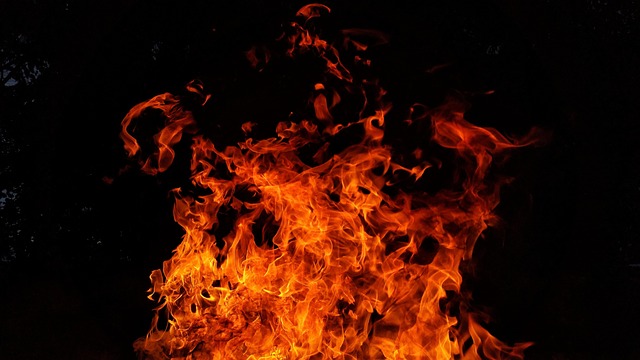Unlock the Secret: 5 Ways the ‘Fiery’ Korean Temperament Dominates Combat Sports
The world watched as Oh Sang-uk of South Korea delivered the first “golden news” for his country at the 2024 Paris Olympics. With breathtaking speed and precision, the world’s No. 4 fencer clinched the gold medal in the men’s sabre individual event. This victory wasn’t just a personal triumph; it was another chapter in South Korea’s long story of excellence in combat sports like fencing, archery, and shooting.
While factors like infrastructure, a large pool of athletes, and economic investment are crucial, they don’t tell the whole story. To truly understand why Koreans excel in these high-pressure disciplines, we need to look deeper—into the nation’s unique cultural DNA. A fascinating lens for this is the concept of constitutional types, which suggests that a dominant Korean temperament gives them a powerful, fiery edge.
Let’s explore this hidden source of strength.
The Geographic Roots of a Resilient People
A nation’s character is often shaped by its geography. South Korea is a peninsula, a land bridge between the vast Asian continent and the open sea. This strategic location has made it a crossroads for both cultural exchange and foreign invasion throughout history.
This constant exposure to external forces forged a distinct national character. Koreans had to be quick, adaptable, and resilient to survive. This environment is believed to have cultivated a prevalence of the Pancreotonia constitution. People with this trait are known for their ability to react swiftly to change and crises. It is this very adaptability that has allowed Korea to maintain its unique language and identity despite being surrounded by powerful neighbors. This inherent resilience is the foundation of the Korean temperament.

The Secret Weapon: The Explosive Energy of Pancreotonia
So, how does this translate to winning gold medals? The key lies in a characteristic trait of the Pancreotonia constitution: a powerful, explosive inner energy, often described as a ‘fire’.
This isn’t simple anger. It’s a powerful, explosive energy that fuels an incredible burst of concentration and power, especially under pressure. In the context of the Korean temperament, this inner fire is described as a unique blend of steady perseverance and the instantaneous, explosive focus typical of the Pancreotonia type.
This inner fire is the perfect fuel for combat sports. Fencing, archery, and shooting don’t just require physical strength; they demand split-second decisions and unwavering focus in the most critical moments. This is where that explosive energy ignites, giving Korean athletes a distinct mental advantage.
5 Ways the Fiery Korean Temperament Manifests in Society
This unique trait isn’t just visible in the Olympic arena. You can see its influence throughout Korean history and modern society.
1. Unrivaled Focus in a Crisis
Koreans have a historical pattern of displaying incredible unity and focus during national emergencies. From the “righteous armies” that voluntarily formed to fight off invaders to the famous gold-collecting campaign during the 1997 Asian financial crisis, the nation has a proven ability to channel its collective energy into a single, powerful purpose when it matters most.
2. The Paradox of Unity and Conflict
A curious aspect of the Korean temperament is that this powerful unity often only appears in a crisis. In times of peace and prosperity, internal competition, jealousy, and social conflicts can become more prominent. Ironically, some sociologists argue that the current polarization in Korean society is proof that the country is stable and prosperous enough to afford such disagreements.
3. The Lightning Speed of Trends
From fashion to food to technology, trends in Korea spread like wildfire and often fade just as quickly. While this could be seen as fickle, it has become a massive advantage in the modern era. As the global economy shifted towards the fast-paced IT industry, Korea’s ability to adapt and innovate rapidly allowed it to become a world leader.
4. A Nation in a Hurry
Even though the Pancreotonia constitution accounts for only about 20-40% of the population, its influence is so strong that the entire culture seems to operate in a hurry. The famous “ppalli-ppalli” (빨리빨리, “hurry-hurry”) culture is a hallmark of the Korean temperament. This shared sense of urgency and impatience permeates daily life, driving efficiency and a relentless pursuit of goals.
5. The Double-Edged Sword of Fiery Energy
This inner fire—this constant state of low-grade anxiety and urgency—is a powerful survival tool. It has propelled the nation through crises and driven its economic miracle. However, it’s a double-edged sword. This same energy can be detrimental to mental and physical health, contributing to high stress levels and burnout. The very Korean temperament that fuels success also makes it difficult to slow down and rest.
Conclusion: Finding a Balance
Oh Sang-uk’s golden lunge was more than a feat of athletic prowess. It was a manifestation of a deep-seated Korean temperament forged by centuries of history and geography. The inner fire associated with the Pancreotonia type gives Koreans an incredible edge in moments of intense pressure.
However, the challenge for modern Koreans is to learn how to control this fire. A little more slowness and relaxation is needed. But then again, a “slow” pace for a Korean is still likely to seem incredibly fast to the rest of the world. Perhaps that, too, is just part of the secret.
For the original Korean text, visit here.
If you’re curious about the basics of traditional Korean medicine and health, read the following article:
The Truth About 8 Constitution Medicine: A Revolutionary Healing Framework Explained
Learn Why Studying JangSang Medicine is Important.
Frequently Asked but Silly Questions (Foods Good for the Liver??)

